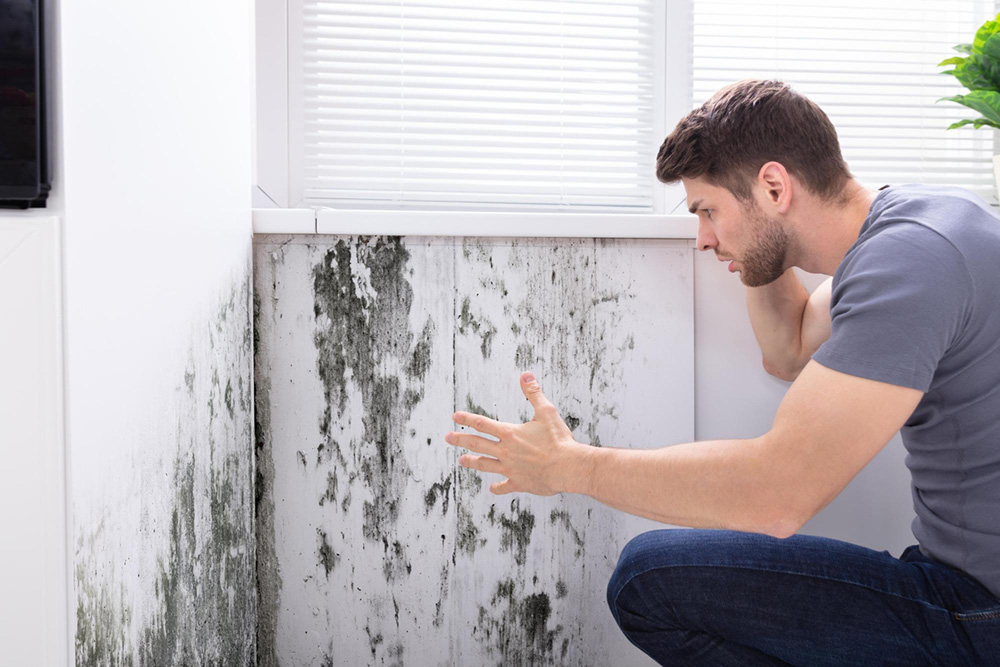Ever get back home and something just does not feel right? Your throat is a little scratchy, or your kid is more tired than usual for no discernible cause. There is nothing like an allergy season, and no one is getting a cold. Nevertheless, the air does not feel right.
It may be something you can not see: mold. And, when it comes to mold growth and indoor air quality, what’s hidden in your walls or vents can have a tangible impact on how you feel every day. This blog will help you understand what’s at stake and share innovative, friendly ideas on mold prevention tips for 2025, as well as uncover the health risks associated with mold exposure. Let’s get on with it.
Why Mold Growth and Indoor Air Quality Matter
Mold is not only unsightly, but it also affects the air we breathe. Nearly 47% of households in the U.S. complain of problems with moisture or mold, a rather unexpected issue that damages indoor air quality, as well as the health of your family. There are some health risks of mold exposure mentioned below:
- Respiratory ailments and allergies: Inhalation of mold may cause sneezing, an itchy throat, and a runny nose, as well as exacerbate asthma in children and adults.
- Chronic lung disease and asthma: There is a connection between prolonged exposure and asthma attacks, hypersensitivity pneumonitis, and allergic rhinitis.
- Cross-reactions: Skin or throat irritations may also occur in people without allergies.
- Neurological symptoms: There have been incidents of brain fog or headache. Grace Cronkright in Florida started experiencing rashes, brain fog, and migraines. Testing revealed mold behind the walls, and once the mold was eliminated with the help of trained professionals, she was able to move on and feel like herself again.
Common and Favorite Spots Where Mold Hides
Just because your house looks clean, it does not mean there is no mold. It does not take much to help mold thrive; simply moisture, warmth, and time. Being aware of where to search is a smart part of a prevention strategy.
These trouble spots are to watch.
- Washing machines and beneath sinks: Leaks might not be noticed until many weeks later
- Inside air ducts and HVAC systems: In humid areas, these can turn into mold factories without you even knowing. If you notice musty smells when the AC kicks on, that’s a red flag.
- Under carpets or behind baseboards: A minor spill or past flooding might’ve left water behind. If it wasn’t dried properly, mold could be growing out of sight.
- Basements and crawl spaces: These areas are often damp and lack adequate air circulation. That combo makes them prime territory for mold.
- Window sills and frames: You’d be surprised how often condensation builds up here, especially in winter or after rain.
The key? Keep an eye on these areas, especially after storms or big weather swings. A quick check can go a long way in preventing bigger problems with mold growth and indoor air quality down the line.
Practical Mold Prevention Tips 2025
Here’s how to tackle mold growth and indoor air quality, keeping your home healthy in 2025 and beyond:
Regulate the Humidity ( Keep it between 30-50%)
Stay in that sweet spot. Any humidity above 50% encourages the growth of mold. Use a dehumidifier, particularly in basements or bathrooms.
Boost Ventilation
Switch on exhaust fans (both the bathroom and kitchen) during and after use. Ensure adequate air circulation, which sucks out humidity and brings in fresh air.
Take Care of Leaks
Mold can grow behind walls due to leaks or roof damage. Fix leaks quickly, and inspect under sinks and behind appliances.
Increase Air Flow
Do not cover the vents with furniture. Open windows whenever the weather permits. Circulating air helps dry the surface and prevents mold.
Use Mold-Resistant Materials
Use mold-resistant paint, drywall, or insulation, especially in areas prone to humidity. If feasible, consider remodeling or reconstructing with mold-resistant elements.
Clean Gutters and Foundation
Accumulation of water around your basement creates an environment for mold invasion. Clean the gutters and ensure that the downspouts are piped to direct water away from the house.
Dry Wet Items Promptly
Dry carpets, furniture, and towels within 24 hours because moisture supports mold growth. Drying steps are an essential part of the process. Mold loves moist places.
Use Hygrometers
They are affordable gadgets that alert you to humidity sneaking in, so you can take action before mold starts to develop.
Why These Tips Work and Why It Matters
- Mold is a common problem: Between 10% and 50% of houses in the United States have moisture or mold issues.
- Health dangers: The effects of mold manifest in breathing difficulties or even mental issues.
- Prevention is better than clean-up: A little thought now will cost less later in cleanup or in medical costs.
Final Takeaway
Caring about mold growth and indoor air quality isn’t overreacting; it’s protecting your home and the people in it. Maintain a suitable humidity level, ensure proper air circulation, seal up leaks, and utilize smart materials. Being proactive will help you feel less stressed, which will also make tomorrow a little easier to handle.
Does your home require a check-up? You are in good hands because Clatterbuck Home Inspections is here to help you. Our certified professionals provide in-depth, sound inspections to create healthier homes. We know what a turn-off a mold can be and how critical air quality is to your health and mind. Let Clatterbuck come to your assistance to help safeguard your home and the people you love. Schedule your inspection today and rest assured that you will breathe clean air indoors.

